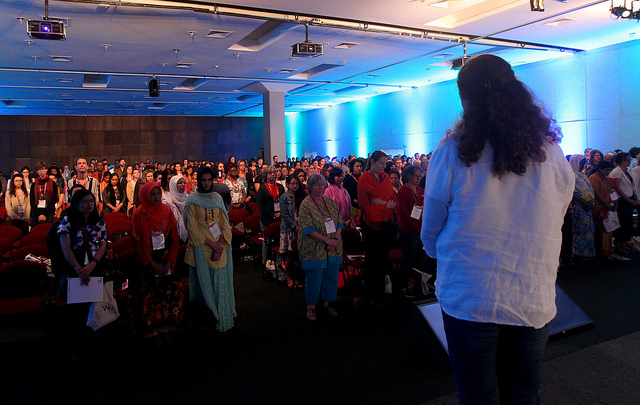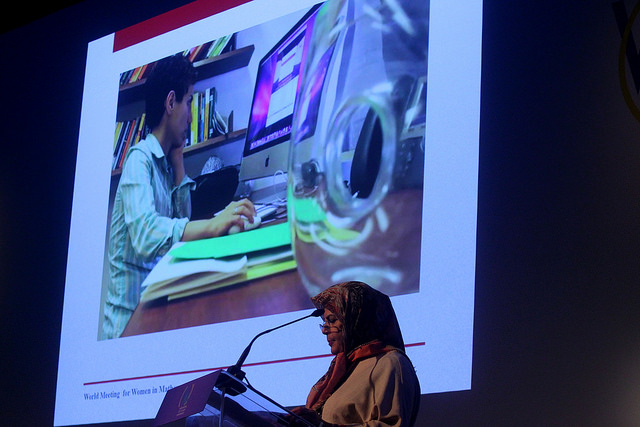Tributes paid to ‘shining light’ Maryam Mirzakhani

There is a classic geometric problem, put forward by Ernst Strauss in the 1950s, called the Illumination problem. In it, he asked if a room with mirrored walls can always be illuminated by a single point light source, allowing for the repeated reflection of light off the mirrored walls. Or in other words, can there be a room shape constructed which would leave any point in darkness?
Maryam Mirzakhani devoted her life to solving equations such us these and her brilliant and innovative work in abstract mathematics is being used to shed light on some long-standing physics problems to do with ricocheting and diffusion of light, billiards, wind and other entities. Her findings are expected to have many uses in science, sports and other fields for years to come.
Read more: (WM)² opens with world premiere of documentary
Alicia Dickenstein presents her “Messi” research
Female mathematicians discuss overcoming career obstacles
There was a quiet and orderly rush in the direction of the lecture hall on Tuesday morning as tributes were about to be paid to the first ever female winner of the Fields Medal (received at the ICM in Seoul in 2014), who passed away from cancer in July of 2017. She left her husband Jan Vondrak, also a professor at Stanford, and young daughter Anahita.
The hall was lead in tribute and a minute’s silence, by Turkish mathematician Betul Tanbay, who recalled the illumination problem and compared her late colleague to the candle itself, lighting a path for others to follow. “Maryam showed forever that excellence is not a matter of gender or geography,” she added, “Maths is a universal truth that is available to us all.”

Maryam was born in Tehran in 1977 and considered herself lucky to have finished junior school at the same time as the Iran/Iraq war ended. Had it not, the world may have been forever deprived of her genius.

The moment she arrived at Sharif University as a young mathematics student, it was clear she was destined for greatness. “I haven´t met anyone in Iran like Maryam,” said Professor Saieed Akbari, who taught her a number of courses and tutored the Iranian Math Olympiad teams. “She was unique, very brilliant. When I taught her linear algebra, I gave her a problem which was very difficult to solve in 3 dimensions. Within one week she came back to me with the solution in every dimension! Another time I gave her an open problem with no solution and offered a ten dollar reward without telling the team that there was no solution. Three days later she came back with it solved!” In both instances, the findings of this young math prodigy were published as papers.
As well as being precociously talented, Maryam was a humble individual, shunning the limelight and deflecting her success. “She told me she had excellent parents, was lucky enough to go to a good school and have a group of brilliant friends. And all of these people helped her win the prize.” Professor Akbari added.
Maryam later became a professor of mathematics at Stanford University where her research topics included Teichmüller theory, hyperbolic geometry, ergodic theory and symplectic geometry. When she was awarded the Fields Medal, her work in “the dynamics and geometry of Reimann surfaces and their moduli spaces” was cited as being stand-out.
Doctor Ashraf Daneshkhah of the Women’s Committee at the Iranian Mathematical Society told me that Maryam has “inspired many women in Iran to go into mathematics.” And her compatriot was a shining example, “very polite and quiet, always thinking rather than talking.”
Doctor Ashraf was here to present a proposal that May 3rd, Maryam’s birthday, be recognized and supported by the ICM as a World Women in Mathematics Day, encouraging females the world over to advance their achievements in the field.


